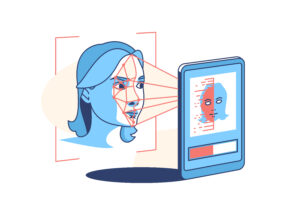Optical Character Recognition or OCR is technology that has completely revolutionized the way banks handle data. It has enabled banks to process large volumes of documents quickly and accurately, allowing them to reduce manual labor and streamline operations. Moreover, its use in the banking sector has opened up a range of opportunities for improving customer experience across different functions such as credit card processing, document indexing, and fraud detection. In this blog post, we’ll be exploring how OCR is changing the banking sector for good and why it’s here to stay.
OCR in the banking sector
Banks are under immense pressure to become more efficient and save costs. It is in this context that Optical Character Recognition or OCR comes in handy. OCR is the technology that enables one to convert scanned images of typed, handwritten or printed text into machine-encoded text. This allows banks to automate their workflows and processes, thereby saving time and money.
There are many benefits of using OCR in the banking sector. First and foremost, it helps banks save on cost and time by automating various processes. For instance, consider a scenario where a customer submits a scanned document for account opening. In the absence of OCR technology, bank employees would have to manually key-in all the relevant information from the document into the bank’s system. This process not only takes up valuable time but is also prone to errors. With OCR in place, all that data can be extracted automatically and accurately within seconds, eliminating human intervention and chances of error.
Another big advantage of using OCR is that it can help banks go paperless. As most of the documents that banks deal with are available in physical form, a lot of storage space is required to maintain them. Not only does this take up valuable space but also increases operational costs associated with managing and retrieving such documents when needed. However, if all these documents are scanned and stored electronically using OCR, they can be easily retrieved as and when required without taking up any physical space. Additionally,
How OCR is used in the banking sector
Banks use OCR to automate the processing of cheques and other documents. OCR can be used to read the information on a document and convert it into a digital format that can be processed by bank software. This reduces the need for manual data entry, which can help to improve efficiency and accuracy in the banking sector.
OCR can also be used to verify the identity of customers when they open an account or make a transaction. By scanning ID documents such as passports or driving licences, banks can quickly and easily confirm the customer’s identity. This helps to reduce fraudulent activity and makes it easier for customers to prove their identity if they need to access their accounts remotely.
The benefits of OCR in the banking sector
The banking sector has been using OCR technology for a long time. The benefits of OCR in the banking sector are many and varied. One of the main benefits is that it helps to speed up the processing of documents. This is because OCR can read and process documents much faster than a human can. This means that banks can processing large volumes of documents much more quickly and efficiently.
Another benefit of OCR in the banking sector is that it can help to improve accuracy levels. This is because OCR technology is able to read and interpret text much more accurately than a human can. This means that there are fewer errors made when processing documents using OCR.
OCR also offers a number of other benefits such as being able to read handwritten text, extracting data from images, and so on. However, these are just some of the main benefits that OCR offers to the banking sector.
The challenges of OCR in the banking sector
The banking sector is one of the most heavily regulated industries in the world. This means that when banks adopt new technologies, they must do so in a way that complies with strict regulations.
One such technology is optical character recognition (OCR). OCR can be used to automate the processing of documents, such as customer applications and forms. This can help banks to speed up their processes and improve efficiency.
However, OCR can also introduce new risks into the banking sector. For example, if OCR is used to automatically process customer data, there is a risk that personal data could be mishandled or leaked. In addition, OCR can make it easier for criminals to commit fraud by creating fake documents.
Banks must therefore carefully consider the risks and benefits of using OCR before adopting it. They must also put in place appropriate security measures to protect customers’ data.
The future of OCR in the banking sector
With the advent of new technologies, the banking sector is set to experience a major shift in the way it operates. One such technology that is set to revolutionize the sector is Optical Character Recognition or OCR. OCR is a technology that enables computers to recognize and process printed or handwritten text. This means that any document that can be scanned can be converted into digital data that can be processed by computers.
This has a number of implications for the banking sector. For one, it would mean that a lot of manual tasks which are currently carried out by human employees would be automated. This would lead to increased efficiency and accuracy in the processing of data. Additionally, it would also allow for quicker turnaround times for various processes such as loan applications and other financial transactions.
Apart from automating tasks, OCR can also be used for fraud detection. This is because OCR can be used to scan documents for certain keywords or phrases that may indicate fraudulent activity. Additionally, OCR can also be used to verify the identity of an individual by comparing their photograph with their scanned ID documents. This would help banks to weed out imposters and prevent fraudsters from carrying out their activities.
OCR is thus set to play a major role in the future of banking. With its ability to automate tasks and detect fraud, it is likely to make the sector more efficient and secure.
Conclusion
OCR technology in the banking sector has certainly proved to be a game-changer, making it easier for customers to access their accounts and make transactions quickly and securely. It has also helped banks cut costs by streamlining processes, reducing manual errors, and allowing them to better manage customer data. We can only expect OCR technology to continue developing over time as more innovative solutions are found. As always, we must remember that security is the key when handling sensitive financial information.






